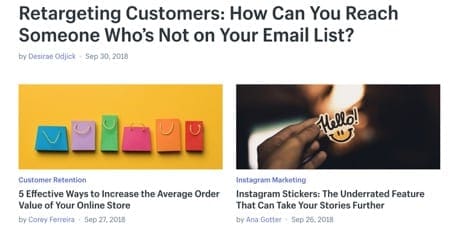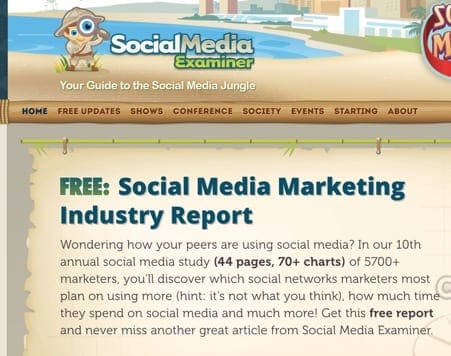Are you Ready to Convert More of your Blog Readers into Customers?
Starting a blog is the easy part, and nothing we haven’t all heard before. It’s also a great way to get more visitors to your site. However, growing an audience of blog readers that will read your content, trust your brand, and help increase your conversion rate, isn’t as easy as you might first think. In fact, according to Derek Halpern, CEO of Social Triggers;
‘Most people who start blogs quit within the first 3 months.’
There are many reasons why your blog may not be getting visitors, let alone conversions and Michael Stelzner, founder of Social Media Examiner, said that;
‘A common reason behind blog failures is a blogger who writes for himself — not their website visitor, social media crowd, or target audience.’
Contact Us
Put simply, you haven’t done your homework on what your target audience wants to read about. You need to give them what they want, not what you want. Whether you have a blog already, or are new to blogging, you’re either successful in attracting visitors to your page or you’re not. If you’re not, you need to figure out why, and bring them there.
What if your blog is getting views but they’re not converting into leads? If this is the case, you still have a problem.
Here are few simple things that you can do to optimise your blog and increase conversion rate. But keep in the back of your mind it’s about quality not quantity to begin with. Focus on getting the most out of your current visitors before trying to attract new blog readers.
1. Customise your Blog for a Specific Target Audience
Straight off the bat we want to talk about how important it is to customise your content for a specific audience. Who exactly is your blog for? You need to know exactly who your visitors will be so that you can tailor your digital marketing plan, and the content, to their needs. It is also crucial to ensure you’re investing time and money in the right kind of conversion rate optimisation.
Lets take a look at a few well-known examples; Shopify, for example. Shopify aims its blog at people who want to have a successful online shop. It includes all things e-commerce, so if you want to start your own online store. then you know it’s the blog for you. Additionally, you know exactly what you can expect to find.

Another great example is Social Media Examiner. Their website helps businesses discover how to best use social media to connect with customers, drive traffic, generate awareness, and increase sales. It’s audience is clear – anyone who is looking to use social media to optimise their business.

As soon as you land on the website, it’s clear what you can expect to find. Therefore, visitors know instantly whether it’s going to be valuable to them, or not.
But what if your business already has big competition? You need to narrow your niche. When you offer your visitors something different, you automatically increase your average conversion rate. You are also more likely to get noticed by the search engines, increasing the chances of your content being shared on social media.
As soon as someone arrives on your blog they should be able to ascertain whether it will be of value to them. Even before they begin reading your content.
As an example, if you visit AIM Internet blog, you don’t need anyone (not even us) to tell you whether the blog is relevant to you or not. You will see that it’s for those who want to grow their business online. It’s clear.

That’s exactly what your blog should do.
2. Create Specific Landing Pages
Avoid sending unique visitors to your new blog’s homepage. Instead, create specific landing pages, which are also optimised. According to a recent study by Marketing Experiments, 44% of clicks and site visits for B2B companies are directed to a homepage, as opposed to a landing page. This means there is big opportunity to increase conversion rate.
When someone arrives on your site, there needs to be as few distractions as possible. This allows them to focus on what you are trying to say. This is a really simple, but effective way of improving your conversion rate overnight.
According to HubSpot, “companies see a 55% increase in leads when increasing their number of landing pages from 10 to 15.”
3. Offer Something of Value to your Target Audience for Free
Now, this might seem contradictory when you’re trying to make money, however we all know everyone likes something for nothing (ourselves included). To give away something of value, whether it be product or information will incentivise your visitors to return. It’s the quickest way to get social media shares, interaction and free inbound links. The best way to get noticed is to give something away for free that your competitors are selling, business is business after all.
If we look back again at Shopify, this is exactly what they do.

4. Address your Audience By Name where Possible
Calling people by name can often lead to increased engagement. A great way to harness this is by incorporating customers’ names into emails (which also boosts open rates by more than 5%).
5. Focus on your Target Audiences Sticky Points
Once you know your audience, you start to understand exactly what it is they need and more importantly their pain points. Understanding their pain points gives you a golden opportunity to explain how your company can help solve them. Identifying key themes can help you develop tailored content that drives conversion. Make sure you also consider the platform you use when communicating to your visitor. While written content is often great, depending on your audience, it may be worth exploring other channels to ensure your delivery best supports their needs and preferences.
6. Embrace Video Content
Following neatly on from exploring other channels of content, Forbes recently shared some very interesting statistics about the impact of video marketing:
- According to YouTube, mobile video consumption grows by 100% every year.
- Video is expected to claim more than 80% of all web traffic by 2019.
- Adding video to marketing emails can boost click-through rates by more than 200%.
- 9 out of 10 customers said that product videos influence their purchasing choices.
- 64% of customers said that a product video encouraged them to buy the product online.
- One-third of the time people spend online is spent watching videos.
- 59% of corporate managers would rather watch a video than read an article or blog post.
There is a direct correlation between increased conversion rates and the use of video marketing. This is why it’s more important than ever to include video in your digital marketing strategy. To test the waters you could consider changing a planned written blog into a video post, and carefully monitoring the results.
7. Call to Action
Just because a visitor reads/consumes your content, it doesn’t mean it will automatically lead to a conversion. It’s important that you make it obvious to your customer what step you want them to take next. It should also be a very simple process.
Three key things to keep in mind are visibility, message and supporting elements – these should help you increase your conversion rate. If a user can’t see the call to action, then it won’t be effective. Place your call to action where it best supports the user’s decision-making process. You also need to make sure it stands out from the rest of the text on the page.

Your call to action should be clear. What do you want the visitor to do, and why should they do it? Replace generic call to action buttons, such as “Buy Here”, with phrases that clearly communicate the benefits of proceeding, like “Try It for Free” or as above, simply “find out more”. A visitor has nothing to lose and everything to gain.
8. Keywords Remain as Important as Ever for Content
Coming back to knowing and understanding your target audience, if you know whom your audience is, you can decipher what the most effective keywords will be. By identifying what users are searching for to find your blog, you can understand what it is they are hoping to find when they get there.
Once you know the most common keywords your blog readers are using, you can use this to your advantage by incorporating them into your call to action. As a result, this will increase the likeliness of users acting. Remember that keywords don’t just mean ‘words’, it can also mean phrases. Take advantage of the wide range of keyword research tools available to help you identify the most effective keywords, both short and long for your blog.
Some great tools are SEMrush, KeySearch, Moz Keyword Explorer and Google Keyword Planner. Using any of these can help you establish keywords accurately and quickly.
9. Looks Matter When it Comes to your Website
When it comes to your site, looks really do matter. A user will form their first impression within 0.05 seconds of landing on your page. This means you don’t have long at all to get them to stay. There are many influencing factors when a user is deciding whether to stay on a website, these include colour, font, images, structure and more. But the bottom line is, keep it simple. Clean, simple designs keep visitors on your site. If a site is messy, busy and complex, then it’s time to rethink your approach.
The important thing to remember? Content is king, but a king isn’t a king without a crown. And as always, it’s imperative that you target your design for your audience. Understanding and knowing your visitor is the key to your success.
10. Use Social Media to your Advantage
You are likely to already have social media implemented into your digital marketing strategy. But, it’s important to refresh this regularly. It is also important to make sure you’re keeping up with the most relevant social media, for your target audience (there’s that phrase again). Different demographics will use different social media platforms, therefore, it’s important to know where you’ll find your visitors. More importantly, where your visitors will find you.
For example, Facebook announced that customers and businesses exchange more than 2 billion messages each month on Facebook Messenger. Apps are becoming more and more popular. Therefore, if you’re not integrating into your strategy, then you’re missing an opportunity to expand your conversion rate. Social messaging apps also allow for more personalisation, which relates back to what we were saying earlier, better engagement. Plus, 46% of people prefer to use a messaging service to communicate with a business to an email.
The popularity of social media stories shouldn’t be overlooked either when looking at your social media strategy. Instagram, Facebook and Snapchat all use live video to encourage user engagement and brand awareness. The live story feature works incredibly well for engagement. It taps into people’s FOMO (fear of missing out), and keeps people returning at least once a day as stories disappear after 24 hours. This makes it a great platform for time limited offers too.
Conclusion
Creating content that converts into sales isn’t difficult, but knowing and understanding your business, what will work and most importantly understanding your audience, is much harder. The tips above are a great starting point. However, if you’re looking for some further advice and help growing your business through content conversion, our experts here at AIM Marketing can help. By investing the time and money into the right approach, you will save on these things further down the line. Not every approach will work for every business, but once you understand how to bring value to your target audience you’re half way there.
Call us today on 0207 856 0418 or send us an email at at info@aiminternet.co.uk to see how we can help convert your blog readers into sales.
If you enjoyed reading this article check out our previous blog post on Organic search and If Google has Signalled the End of Websites as we know them.

